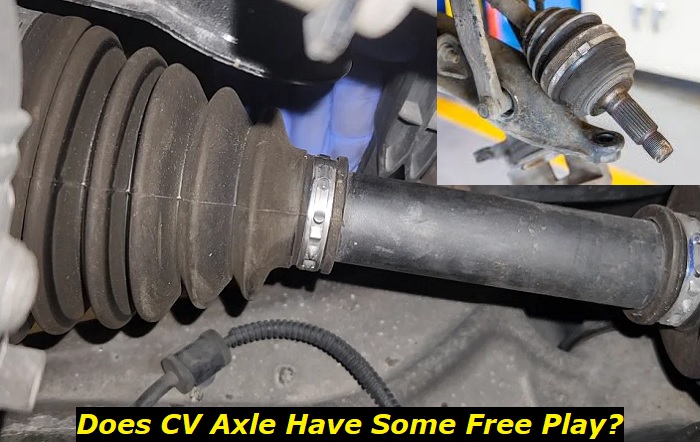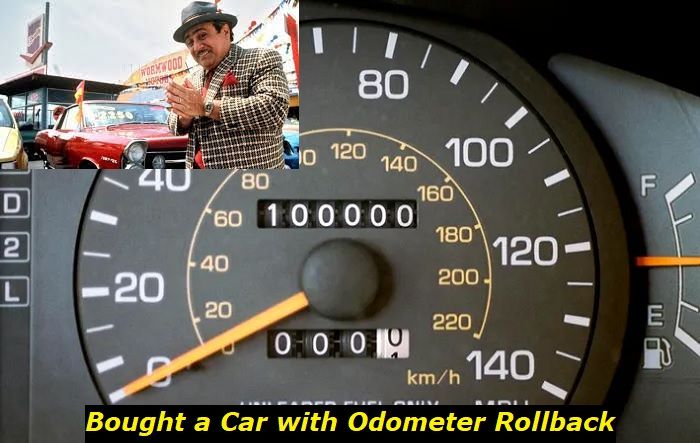When it comes to diagnosing the vehicle's suspension and transmission, it's always better to go and have a professional look at your car. But sometimes, we want to master some DIY basic diagnosing principles to just check whether our vehicle is OK or not. Maybe, it's just a hobby, or one of those situations when we just want to do something with our own hands.
Drive shaft problems highlights
- Level of importance:high
- Common reasons:old drive shaft, accidents, broken rubber protection
- DIY inspection:possible
- DIY repair:impossible
- Average price in shops:$250 - $500
- Average time:2 - 3.5 hours
- If ignored: no-drive, unpleasant sounds, hub wear

So, should there be some play in a CV axle?
In short, yes, there should be some play closer to the inner joint, but this play is minimal. The inner joint is constructed that way to have some minimal free play, so when you shake the CV axle near the inner joint, you may feel some movement. It shouldn't be really big, just some hardly felt knocking.
The outer joint, on the contrary, doesn't have any free play, it should firmly hold the axle. If you feel play when you touch the CV axle near the outer joint, you should understand that there is a problem and you should have the outer joint replaced.
Unfortunately, it's hard to explain what kind of play you should expect from the inner joint, but here are some important signs of problems:
- the free play is too easy to feel, the CV axle just knocks hard when you shake it;
- you can hear knocking when you shake the axle - this is the sign of a dead joint;
- the axle has some play on both sides - the outer joint should be checked;
- there is no free play in the inner joint (the one that is placed near the transmission);
- the inner joint is greased with transmission fluid or some other liquids;
- the axle doesn't seem to be completely straight;
- any visual defects and problems should also warn you about axle issues.
Now you know what to pay attention to. But no, you shouldn't worry much if you find out the CV axle in your car has some free play. This is the normal behavior of the part and you should maybe ask a specialist next time you are in a repair shop. Unless the free play is too large, there is nothing to worry about.
What can happen if the CV axle has excessive play?
The CV axle itself is a very durable part. It can have two types of damage:
- bending when hit over something;
- losing its teeth on both ends that contact with joints.
But these problems are not very common for a CV axle, so if you notice any knocking or other problems, it should be the joints. These parts are much less durable and are prone to damage.
The inner joint will just know a lot when you start moving the vehicle and stop it. This knocking then may grow into problems with making your vehicle move because the joint may slip and fail to deliver torque to the wheel. But these inner joints will actually knock for months before they fail.
Outer joints are constructed differently, so they are going to cause much more problems for you. If the outer joint is the root of your problems with the CV axles, the following things may happen:
- the joint may fall apart and the axle will just fall to the floor;
- the engine will rev up, but the torque will not be delivered to the wheels;
- the outer joint will knock when you turn the vehicle;
- the joint may also know when you drive straight if it's in a very bad condition.
This knocking shouldn't be overlooked. If the joint isn't replaced on time, it will cause a bad problem - your vehicle may just get stuck in the middle of nowhere and you won't be able to drive it anywhere. The tow truck will be the only solution because even towing won't be a good idea.
Final words
Now you know that a little free play in your CV axle near the transmission is completely OK and it even should be there. But if the free play is too noticeable and you just feel the axle knocking, the best idea is to have the vehicle diagnosed and replace those joints.
The outer joint will cause problems much more often than the inner one while the axle itself is pretty durable and almost never fails.
About the authors
The CarAraC research team is composed of seasoned auto mechanics and automotive industry professionals, including individuals with advanced degrees and certifications in their field. Our team members boast prestigious credentials, reflecting their extensive knowledge and skills. These qualifications include: IMI: Institute of the Motor Industry, ASE-Certified Master Automobile Technicians; Coventry University, Graduate of MA in Automotive Journalism; Politecnico di Torino, Italy, MS Automotive Engineering; Ss. Cyril and Methodius University in Skopje, Mechanical University in Skopje; TOC Automotive College; DHA Suffa University, Department of Mechanical Engineering






Add comment